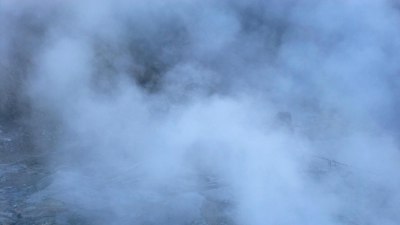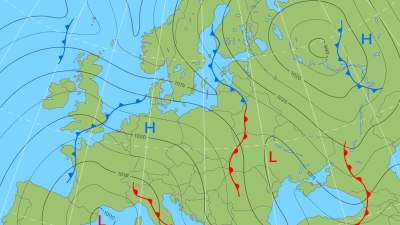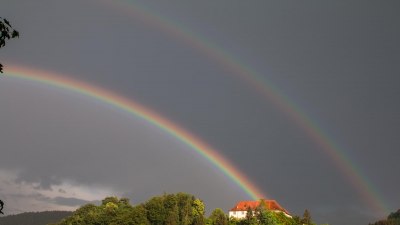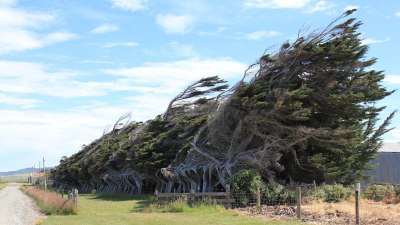What Causes Ice Fog and Why It’s More Dangerous Than You Think
Explore the causes of ice fog and understand its dangers to stay safe in harsh winter conditions.

Ice fog is a fascinating meteorological phenomenon that occurs under specific atmospheric conditions, creating a veil of tiny ice crystals suspended in the air. It often forms in extremely cold environments, particularly in polar and subpolar regions during the winter months. While it may seem like a harmless occurrence, ice fog can pose significant dangers to travelers and residents in affected areas. Understanding what causes ice fog, as well as the potential health and safety hazards associated with it, is crucial for those living in or traveling to cold climates.
Conditions Leading to Ice Fog
Ice fog typically manifests when the temperature plummets to below freezing, often leading to conditions where the air can hold moisture but remains exceedingly dry. When humidity levels are at about 70% or higher in sub-zero temperatures, the air becomes saturated with moisture. This moisture can condense into microscopic water droplets that freeze upon exposure to the cold air, resulting in the formation of ice fog. Ice fog is especially common in locations with low thermal energy due to high latitude or elevation, such as Alaska, northern Canada, and parts of Siberia.
One of the primary contributors to the occurrence of ice fog is radiation cooling, which happens when the ground loses heat rapidly during clear nights. As the chilled surface cools the air directly above it, the temperature drops. If humidity is sufficient, ice fog can form as tiny water droplets freeze into ice crystals, creating a dense fog that hangs in the atmosphere.
Characteristics of Ice Fog
Ice fog appears as a dense, often thick layer of fog, creating a visually striking scene where the landscape is transformed into a crystalline wonderland. The ice crystals can reflect light in mesmerizing ways, making it a beautiful yet treacherous backdrop for those navigating through it. However, the beauty of ice fog is deceptive; it can reduce visibility to near-zero levels, making travel extremely hazardous. As drivers and pedestrians may have trouble seeing their surroundings, the risk of accidents significantly increases.
Visibility Challenges
One of the primary dangers of ice fog is reduced visibility, which is often exacerbated by the brightness of the ice crystals themselves. The light reflecting off the ice can create a blinding effect, further disorienting individuals. This means that drivers may struggle to see road signs, lane markings, and pedestrians, leading to a higher likelihood of collisions. In severe cases, ice fog can create whiteout conditions, where individuals may lose orientation entirely, making it difficult to discern the ground from the sky.
Health Risks Associated with Ice Fog
Aside from the risks related to travel safety, ice fog can have health implications as well. Prolonged exposure to ice fog can aggravate respiratory issues, particularly for individuals with asthma or other pre-existing lung conditions. The minute ice crystals can irritate the respiratory tract, causing difficulty in breathing. In individuals with compromised immune systems, there is also an added risk of respiratory infections as the cold air can stress the body. If someone is exposed to ice fog for an extended duration without adequate warmth, they could also face risks of hypothermia, which is potentially life-threatening.
Driving Safely in Ice Fog
If you find yourself driving in ice fog conditions, it is essential to take safety precautions. First, reduce your speed significantly; driving faster in fog reduces reaction times and increases stopping distances. Use low-beam headlights instead of high beams, as high beams can reflect off the ice crystals and decrease visibility. Additionally, maintain a safe distance from the vehicle in front of you, as brakes may take longer to engage on icy roads.
It is also advisable to remain aware of your surroundings and listen to local weather reports for updated advisories on ice fog. If conditions deteriorate significantly, it may be wise to pull over in a safe location until visibility improves.
Preventive Measures in Winter
To minimize risks associated with ice fog, individuals residing in cold climates can take some preventive measures during the winter months. Ensuring that home heating systems are functioning optimally can help maintain a warmer indoor environment, reducing the detrimental effects of cold air on one’s respiratory health. Regular maintenance of vehicles, especially ensuring good tire conditions and checking windshields, can enhance safety. Furthermore, using antifogging products on glasses and vehicular windows can help maintain better visibility during unpredictable weather.
Local Responses to Ice Fog
Local authorities in regions prone to ice fog typically have strategies in place to mitigate its dangers. Public information campaigns often educate residents about the risks and encourage community members to stay informed about weather forecasts. Cities may deploy snow removal crews and salting operations proactively during freezing temperatures, decreasing ice formation on roads that can exacerbate fog conditions. Additionally, some areas implement design features like reflective road markings to help drivers navigate safely during low visibility. Communities can also establish assistance programs to help those who might be at higher risk during ice fog events, such as the elderly or those with mobility difficulties.
Final Thoughts on Ice Fog
In conclusion, ice fog is more than just an aesthetically interesting atmospheric phenomenon; it has serious implications for visibility and respiratory health. Understanding the conditions that contribute to its formation, along with the potential hazards associated with it, is vital for safety during winter months in cold regions. By staying informed and taking necessary precautions, individuals can enjoy the winter landscape while minimizing the health risks and dangers that ice fog can present. As climate patterns continue to evolve, awareness about meteorological phenomena like ice fog will be crucial in preparing for and responding to winter weather challenges effectively.











